On the anniversary of one of our top birding days of 2024, I am daydreaming about warblers. Warblers are tiny songbirds that live much of their lives in the tropics, but migrate further north to raise young and take advantage of the boon of spring and summer resources that abound across the temperate climes. In my experiences as a bird-watcher, their arrival in springtime has always been the hallmark of the season. In the northeast, they come after the large flocks of waterfowl, after the woodpeckers have long been drumming, after the snowmelt and much of “mud season,” and almost in perfect synch with the budding of new leaves on trees, which means warblers are both exciting and tricky because you have only moments to spot them before they hide behind the bright new growth. In Montreal, we often birded alongside a local guide and enthusiast who was fond of declaiming “showtime!” as soon as the warblers popped their bodies out of a stand of bushes. And indeed, the paparazzi of local photographers would immediately descend, camera shutters chattering furiously.
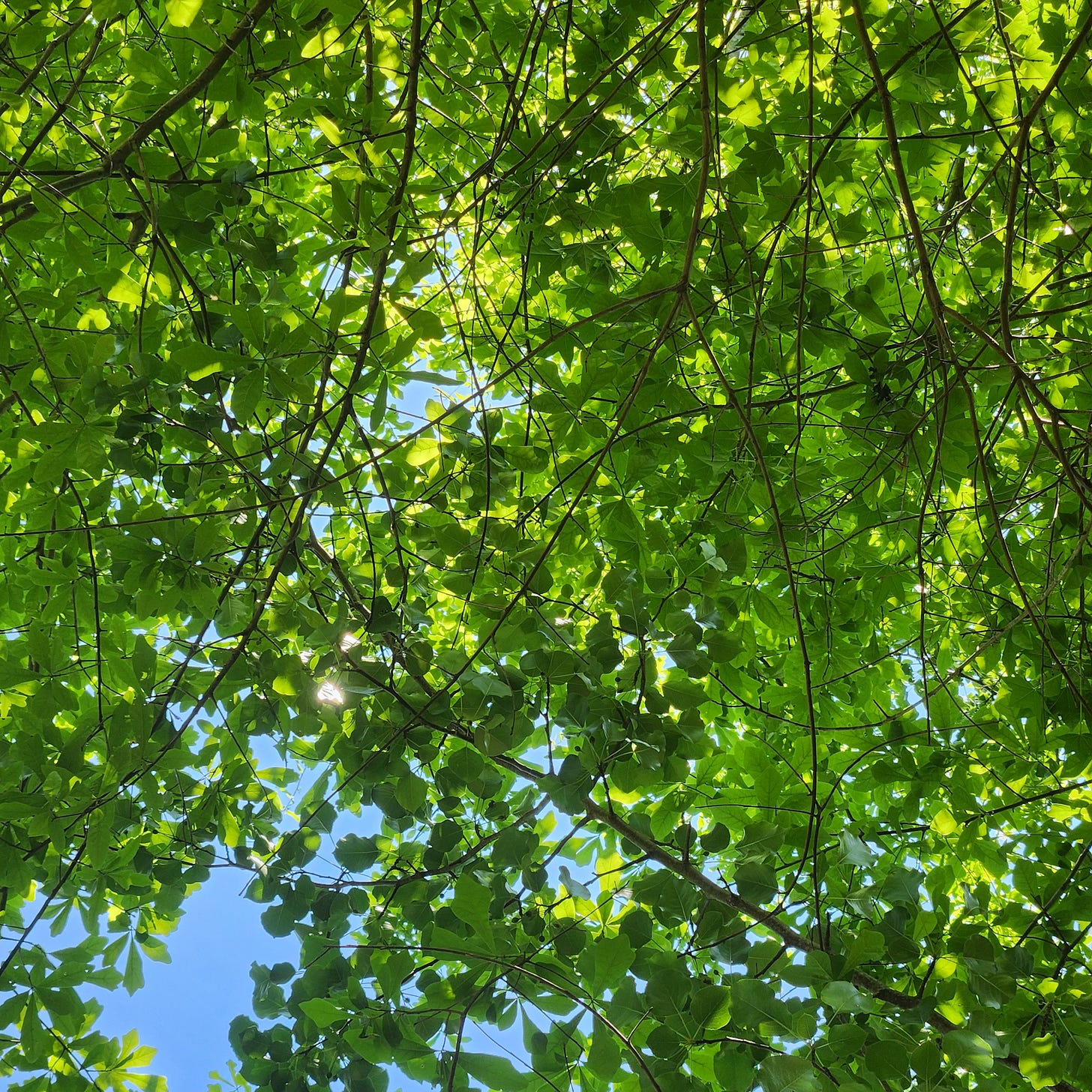
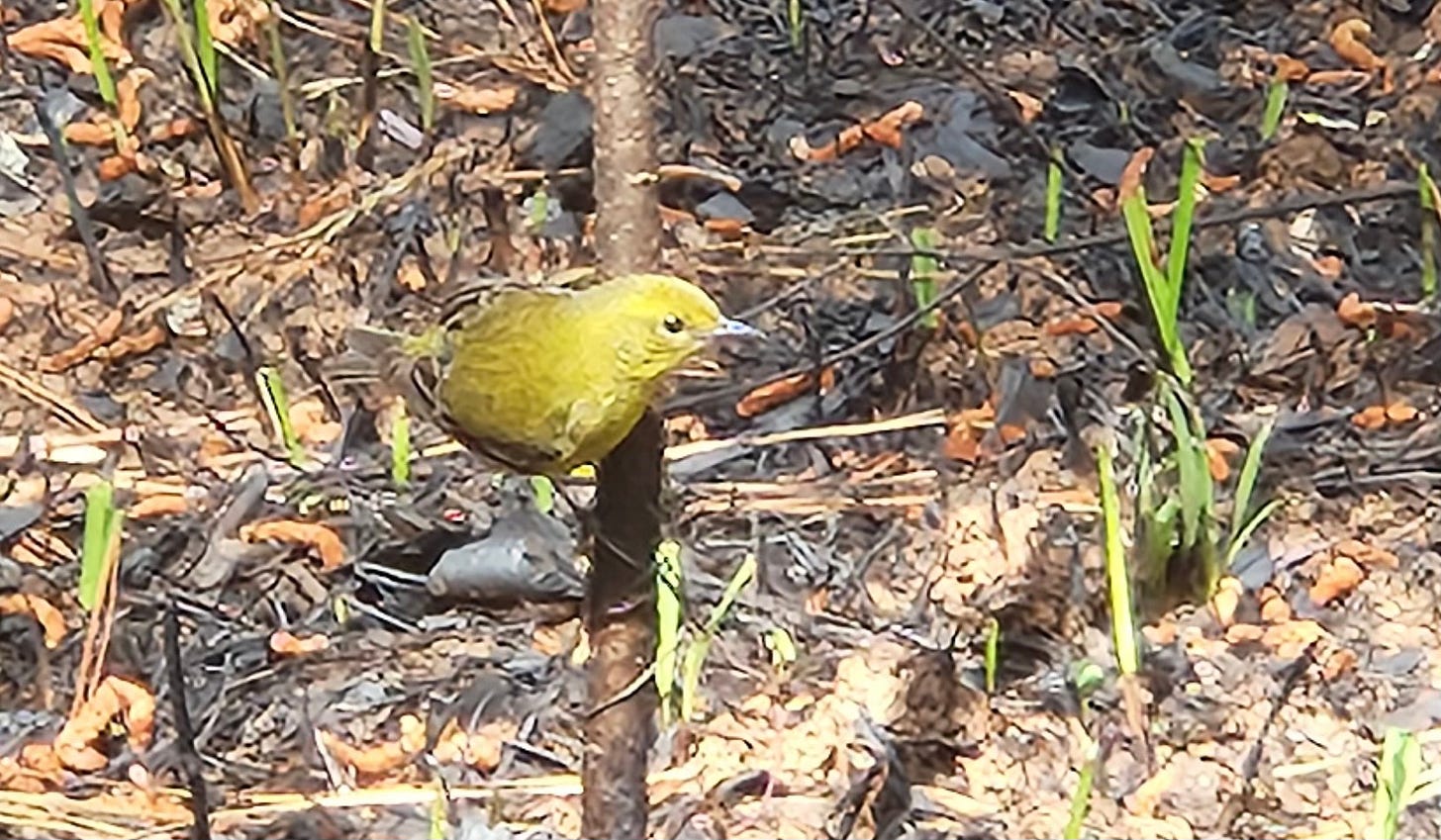
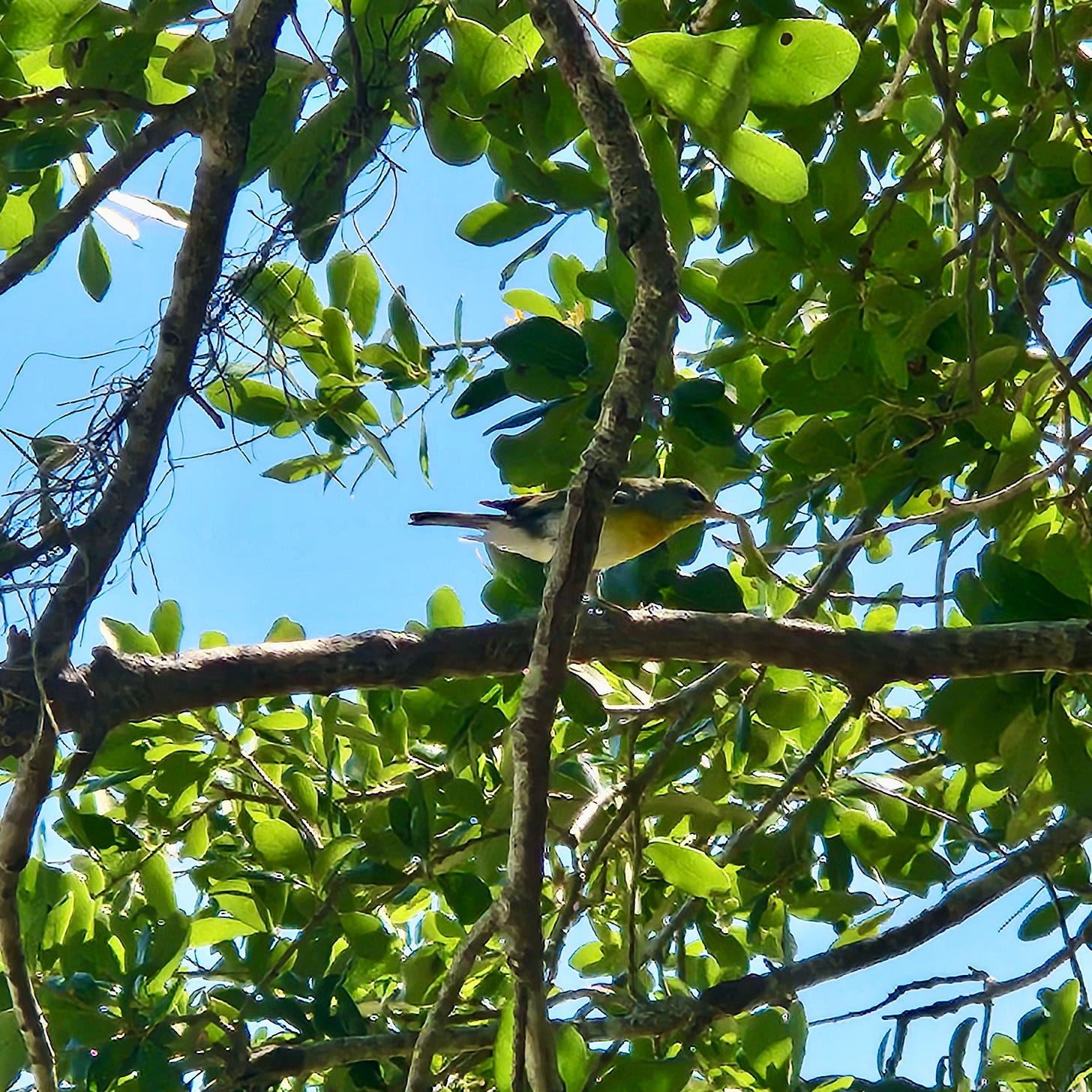
Tyler and I were especially excited to travel across the southern US last spring because it was our first good chance to see many warblers whose usual range doesn’t extend quite as far north as Montreal or New England. We had two new life warblers during April last year, Worm-eating Warbler (Helmitheros vermivorus) and Swainson’s Warbler (Limnothlypis swainsonii)—both skulky understory warblers who gave us brief but darling glimpses. We also delighted in being regularly serenaded by the Prothonotary Warblers (Protonotaria citrea) so common in the swampy marshlands of the south. They were the soundtrack to our manatee sightings, our riverside camping, our mornings in a tent in Alabama and Florida and Mississippi. Known colloquially as “Swamp Candles,” they flash bright yellow even in the gloom of a dusky or deep-shady bayou. So gorgeous and graceful.
Tallying all the warbler sightings of 2024, we totaled 34 species: a formidable number that would be near impossible to amass while standing in place in your backyard in just one region of the country. Oh, but maybe it depends on where your backyard is! On April 22, 2024, we spent a morning at Fort Morgan, Alabama, wandering a one-acre mini-preserve of scrub oak at the tip of a barrier island that protects much of the Alabama mainland from the open Gulf of Mexico. Conditions were perfect for a migrant trap: southerly winds the prior evening had brought many birds streaming over from the Yucatán Peninsula, but a change in weather overnight meant that heavy north headwinds now prevented most of those migrating birds from traveling onward to the mainland. They touched down on that first strip of land they found, and took advantage of the situation to rest and refuel. While they filled their gullets, we feasted our eyes on, get this: 21 species of warblers in one day! Combined with all the other colorful migrants: tanagers, orioles, flycatchers, cuckoos… this was possibly our most dizzying day of birding all year. We napped on a bench under a tree dripping with birds because we couldn’t bear to tear ourselves away, but we had exhausted ourselves trying to see all the beauty concentrated in one tiny confluence of space and time.
With their diminutive size, their fleeting migratory habits, their gorgeous spring colors that fade to autumn browns, their songs that devolve to tiny chips and cheeps in the fall, warblers are the essence of seasonal change. They are living reminders to seize the moment and enjoy what you can, when you can. A lot of the world feels overwhelming and unstable right now, but no matter what we humans are up to in our worlds of politics and domination, spring is afoot in the northern hemisphere, and spring is a reminder that change is also regenerative. Now is the time to seek glimmers of hope and new growth, seek sustenance from the sounds and smells and colors appearing around you. Much of what spring has to teach is about the power of small things: individual seeds sprouting and becoming the sidewalk-wrecking trunks of trees, the astonishing survival of winged insects that appear to be made of only gossamer and light. Watch birds closely enough, and eventually you will learn to hear the tiny calls of young in the nests, learn to spot those nests balanced in the most precarious positions, tied to limbs with only wisps of straw. Tyler is fond of reminding me whenever we find one: “a bird made that with its face!” Do you feel clumsy and inadequate sometimes? Do you feel insufficient to your own rage? Take inspiration in the warblers of springtime, who manage to cross oceans on wingspans averaging only 6-8 inches wide. Everywhere, the seemingly meek and mild have so much to teach us about strength.
As I said, we alighted on this journey in part to seek sightings of species we had never witnessed before, and we were rewarded with many of those sightings. But after a few months have passed and we’ve begun to digest the memories of the year, I have been drawn to the most familiar friends. Those birds we saw most commonly, many of whom are urban or backyard birds we knew even as children: American Robins, Mallards, Red-winged Blackbirds, Turkey Vultures. Topping the list of all the birds we saw last year for most frequently spotted? The Yellow-rumped Warbler (Setophaga coronata). And among all the warblers we saw all year, 43 percent were Yellow-rumped! Wow! In contrast, the species we traveled so far to see, briefly, once, barely register a statistical partial-percentage point each. And while those sightings retain an out-sized power in the memory, flashing forward as clear moments of joy in the discovery, it is the familiarity of the clear throat and eye arcs of a Yellow-rumped I would first like to see in this moment.
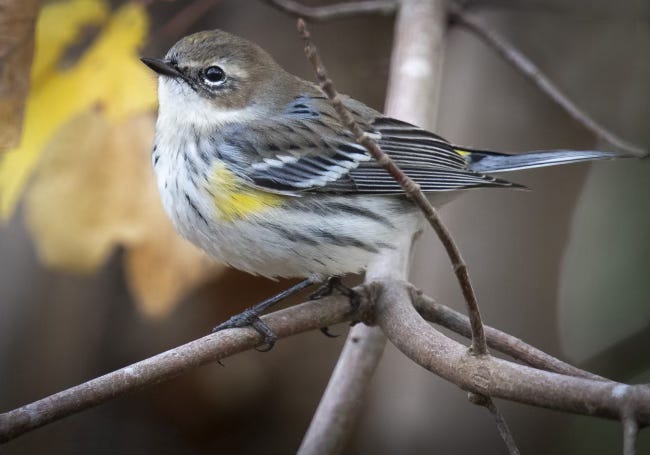
I write this from the North Slope of Alaska, back for another season at Toolik Field Station, where we have a bit of a wait ahead of us before we can hope to see any stray warblers. Since late March, we have had two species of birds, total: Common Raven (Corvus corax) and Snow Bunting (Plectrophenax nivalis). The other day, a Raven perched on the roof above the kitchen and called down the exhaust pipe as if to taunt us to get outside and enjoy the beautiful day. The Snow Bunting hopped about under one of our dorms, looking for a few bare wisps of grass that weren’t buried under snow. I heed the Raven’s call and take a break from kitchen work to shovel snow in front of one of the lab buildings. I pause to stretch, breathe, take in the scene, and am immediately joyous to hear a single cheeping bird call as a Snow Bunting flies overhead, trailing a second! So this, here, is the quiet beginning to spring. Each sighting stands out in stark relief, a whole week of time around it to isolate it from other competing sightings.
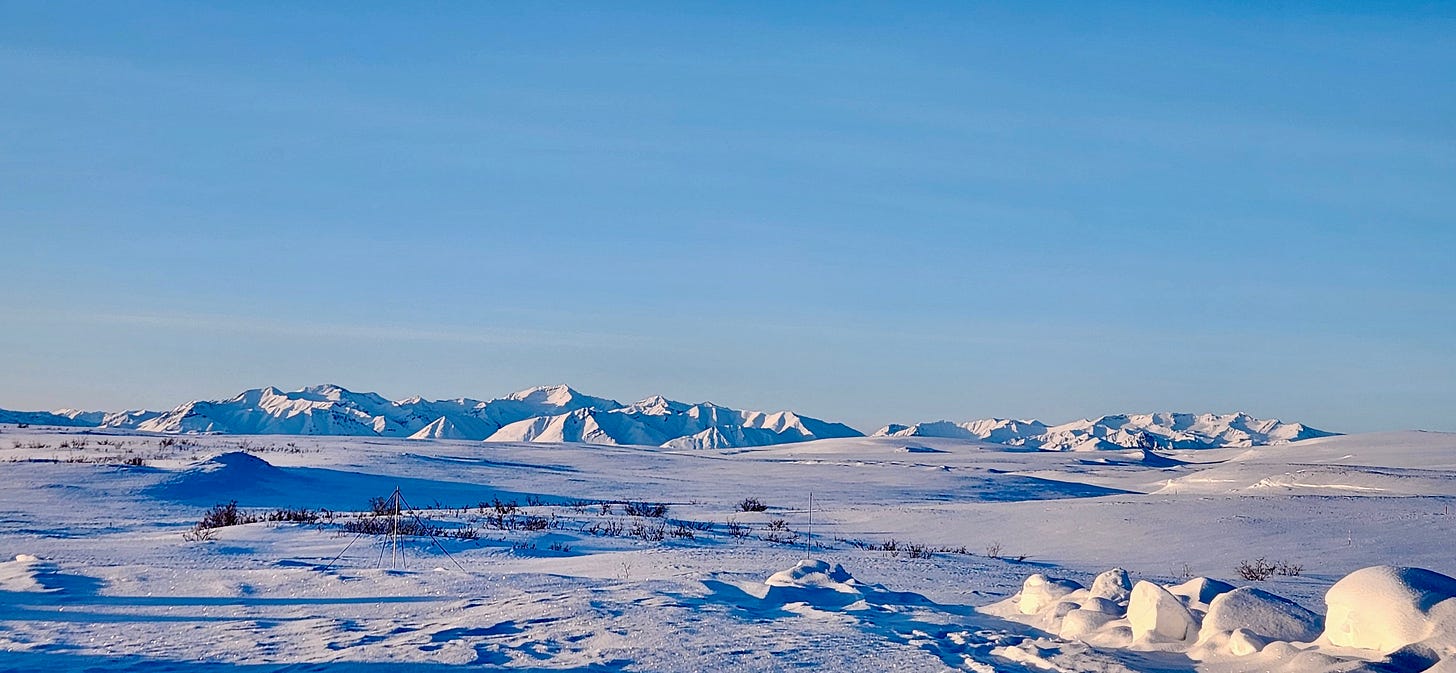
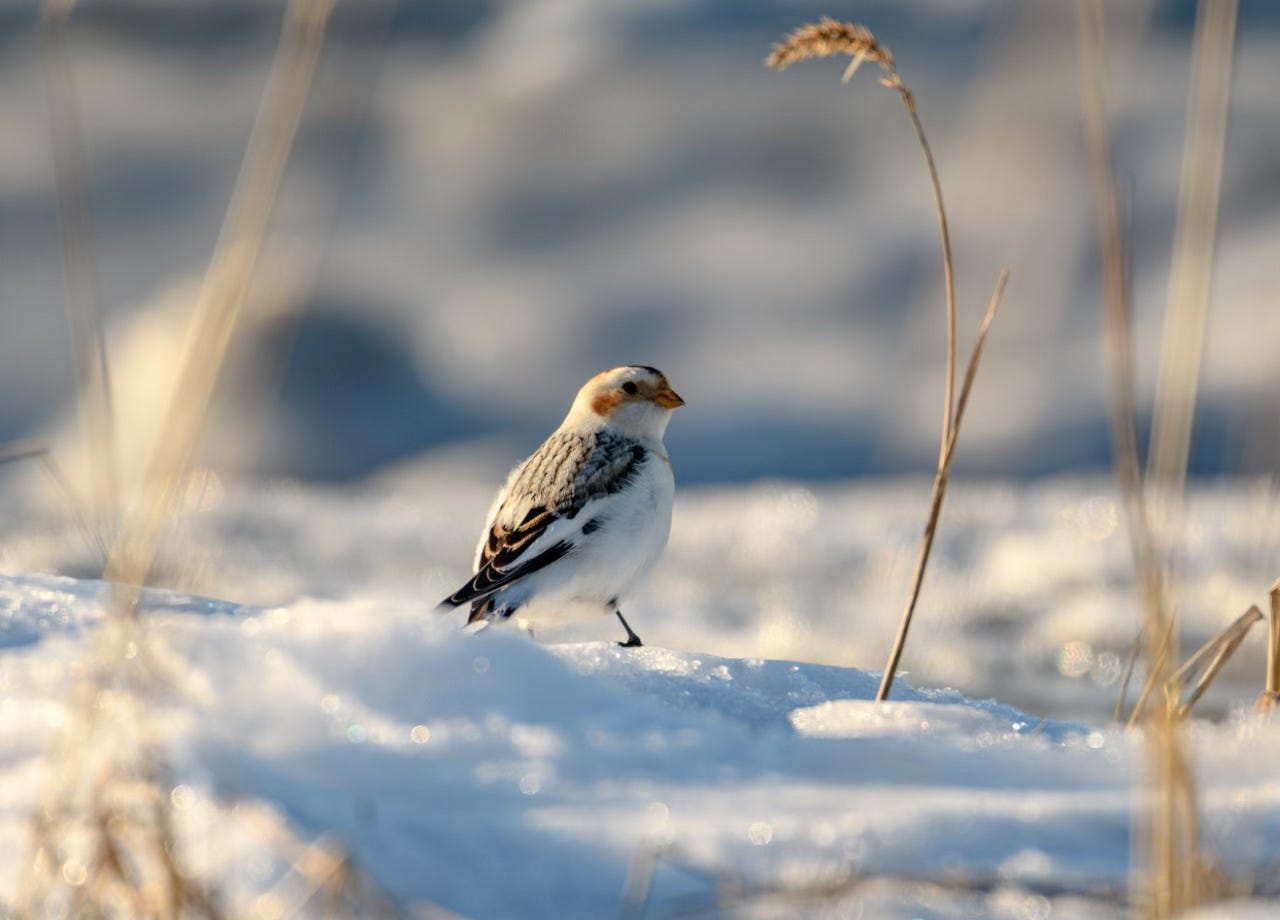
While I am delighted to be here, thrilled to have this opportunity, I can’t deny that part of me is closing my eyes and remembering: the kaleidoscopic technicolor dream of spring down south. I don’t even need the visuals, but oh, I miss the sound! I could just lie, eyes closed, in a tent below the trees and listen: pick out the new arrivals by their songs. If you are anywhere near a singing bird, please close your eyes and listen for me. One more springtime is happening right now.
Happy Earth Day.






Love, love your sensitive and elegant writing, Rachel. Springtime is utterly inspiring. And the return of songbirds is Just The Best antidote to nearly every woe. (Also love, and miss, Tyler's crass and witty exclamations--I can just hear it, "...a bird made that with its face!") Would the two of you come out for a session when we don't have an (otherwise) SES and share a program for staff & guests about your mod-sized year? With photos?! With plenty of witty and elegant anecdotes and stories?!...this would so fabulous and inspiring. Email me! xoxo
The birds woke me up this morning and soft green leaf buds were attached to my shoe when I wiped my feet on the rug. Spring is here in costal CT.